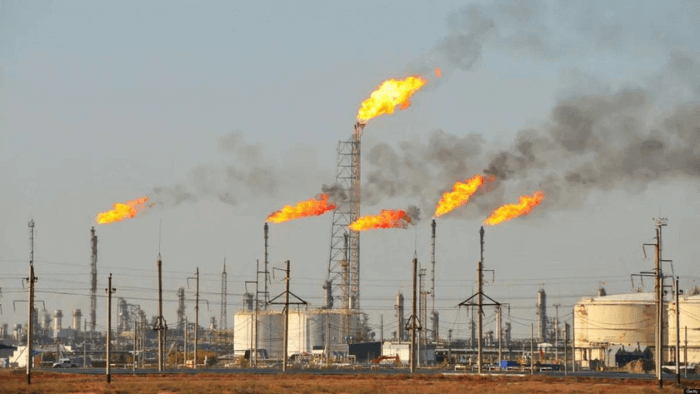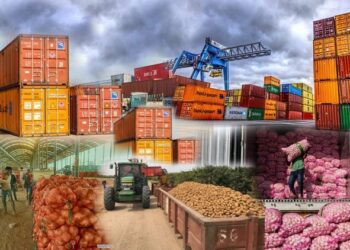Four years after launching its ambitious “Decade of Gas” initiative, the federal government faces mounting criticism as critical projects remain stalled. Delays have raised alarm bells, leading many to question whether the initiative is a mere slogan rather than a substantive action plan. Investigations by NATIONAL ECONOMY reveal that essential elements of the programme have been largely neglected, putting its intended goals in serious jeopardy.
Launched on March 29, 2021, by former President Muhammadu Buhari in Abuja, the ‘Decade of Gas’ initiative aims to leverage Nigeria’s substantial gas reserves to drive economic growth and development. Collaborating with various stakeholders, the government sought to enhance gas utilisation from 2020 to 2030.
Despite boasting nearly 209 trillion cubic feet of natural gas reserves—making Nigeria the ninth-largest gas holder globally—the country currently produces only about 8 billion standard cubic feet per day (bscf), primarily for export. The $20 billion initiative focuses on four strategic pillars: increasing domestic gas utilisation, expanding gas infrastructure, boosting gas exports, and attracting foreign direct investment into the gas sector.
To achieve these objectives, the government proposed several policy measures, including a new gas pricing regime to stimulate investment, the development of essential gas infrastructure, and the promotion of gas-based industries such as fertiliser production, power generation, and petrochemicals.
Following the declaration, a ministerial committee was formed, comprising officials from the ministries of petroleum resources and finance, regulatory agencies, industry operators, and the Nigerian National Petroleum Company (NNPC). A steering committee was established, and a consultant was engaged to draft an action plan outlining the roadmap for the Decade of Gas.
The action plan, obtained by NATIONAL ECONOMY, reveals a meticulously crafted timeline with specific deliverables, including a firm commitment to settle debts owed to gas producers and initiating discussions on ten key gas projects expected to be completed by August 2022. However, as of now, these projects have yet to commence.
The government’s expectations for the initiative are ambitious, projecting that gas demand will grow at a compound annual growth rate of 16.6 per cent between 2020 and 2030. This growth is anticipated to be driven by major projects, including the NLNG Train 7, the Nigeria-Morocco pipeline, NLNG Train 8, and related projects linked to the AKK pipeline.
Additional initiatives under the Decade of Gas include the Brass Fertiliser project and the construction of several power plants reliant on gas supply. Gas resources for these projects are expected to come from specific onshore non-associated gas (NAG) and shallow water associated gas/NAG development ventures.
Crucial infrastructure projects, such as the Obiafu-Obrikom-Oben Gas Pipeline, designed to transport gas from the Obiafu-Obrikom gas plant in Rivers State to the Oben gas plant in Edo State, are part of the strategic plan. Additionally, the Escravos Lagos Pipeline System Phase II aims to enhance gas transportation from the western Niger Delta to Lagos and other southern cities.
The Assa North-Ohaji South Gas Development Project, targeting gas fields in Imo State, is another key initiative set to help realise the objectives of the Decade of Gas. Furthermore, the initiative seeks to revitalise the Nigerian Gas Flare Commercialisation Programme, aiming to eliminate gas flaring through various monetisation strategies, including gas-to-power and gas-to-industry projects.
According to the government’s projections, natural gas production should increase from 8.0 bscfd in 2020 to 12.2 bscfd by the end of the decade, with approximately 58 per cent of this production expected to come from NAG reserves. However, for these goals to be met, essential infrastructure projects—including pipelines—must be delivered on schedule, and a transition to market-based gas pricing needs to occur.
To facilitate this transition, an investment of approximately $9 billion is required for priority pipeline infrastructure, with the government expected to contribute about $1.5 billion. Private sector investment is anticipated to be stimulated by establishing market-led prices for gas sales and transmission costs.
The comprehensive plan also includes the creation of gas processing facilities, necessitating around $6 billion in investment for new infrastructure. A tolling framework for third-party access to processing facilities is essential for commercial agreements, as well as establishing onshore processing facilities and regasification terminals to cater to domestic market needs.
To meet the projected shortfall of 0.95 bscfd in distribution capacity by 2030, the plan identifies a $1.5 billion investment requirement for distribution systems. This includes an estimated $0.9 billion for liquefied petroleum gas (LPG) and $2.6 billion for compressed natural gas (CNG) initiatives, financed through long-term loans at low-interest rates.
The guiding principles for the Decade of Gas revolve around implementing cost-reflective tariffs across the gas value chain, ensuring participants earn reasonable returns, and balancing the needs of vulnerable end users.
The strategic plan outlines three key interventions aimed at securing Nigeria’s Decade of Gas: enhancing investor confidence by addressing historical debt to gas producers (estimated at $900 million), implementing cost-reflective pricing to ensure attractive returns for investors, and supporting critical infrastructure development.
Failure to act swiftly could lead to a projected gas supply shortfall of at least 3 bscfd by 2030, the government warns. This shortfall could exacerbate the domestic gas shortage, as six power plants developed under the National Integrated Power Project (NIPP) are already facing gas supply constraints, risking shutdowns across multiple plants by the end of the decade. Such a situation would hinder the NLNG’s ability to meet its supply commitments and discourage investment in the sector.
The chairman of the National Gas Expansion Program (NGEP), Ministry of Petroleum Resources, Dr. Mohammed Ibrahim, emphasised Nigeria’s vast gas potential compared to crude oil, describing the country as “an ocean of gas with a drop of crude oil.” He highlighted autogas (LPG/CNG/LNG) as an immediate alternative to conventional fuels, stating that globally, autogas use in the mobility sector has risen by over 40 per cent.
He noted that progress requires the establishment and enforcement of sound guidelines, codes, and standards, alongside legislative, regulatory, and judicial mandates to deepen the penetration of natural gas vehicles (NGVs). Additionally, addressing fuel price differentials, offering credit lines, and providing custom duty and tax exemptions are crucial for encouraging investment in the CNG programme.
Dr. Ibrahim pointed out that gasoline subsidies erode the long-term economic benefits of CNG. Globally, price differentials are key to success, ranging from 33 per cent in the USA to 75 per cent in Iran.
NATIONAL ECONOMY confirms that Nigerians are willing to transition to gas, given the benefits. Lanre Lawal, who runs a sports viewing center in Ojo local government area, Lagos, shared that with a full tank of PMS in his generator, he runs it for 12 hours, whereas his generator operates for 17 hours at a lower cost using LPG.
Nigeria is not the first country to pursue gas utilisation. Countries like Iran, Brazil, and India have successfully boosted the use of Natural Gas Vehicles (NGVs) in their respective markets. However, a review of Nigeria’s LPG performance over the past two decades reveals disappointing results. In 2004, the country launched an LP Gas Sector Improvement Study aimed at increasing LPG consumption per capita to an average of 3.7 kg. Yet, 17 years later, Nigeria’s LPG consumption per capita remains a meager 2.3 kg.
Development and energy economist at Adeleke University, Professor Tayo Bello, told NATIONAL ECONOMY that while gas holds significant opportunities for the energy sector, aligned policies are necessary to realise its full potential.





